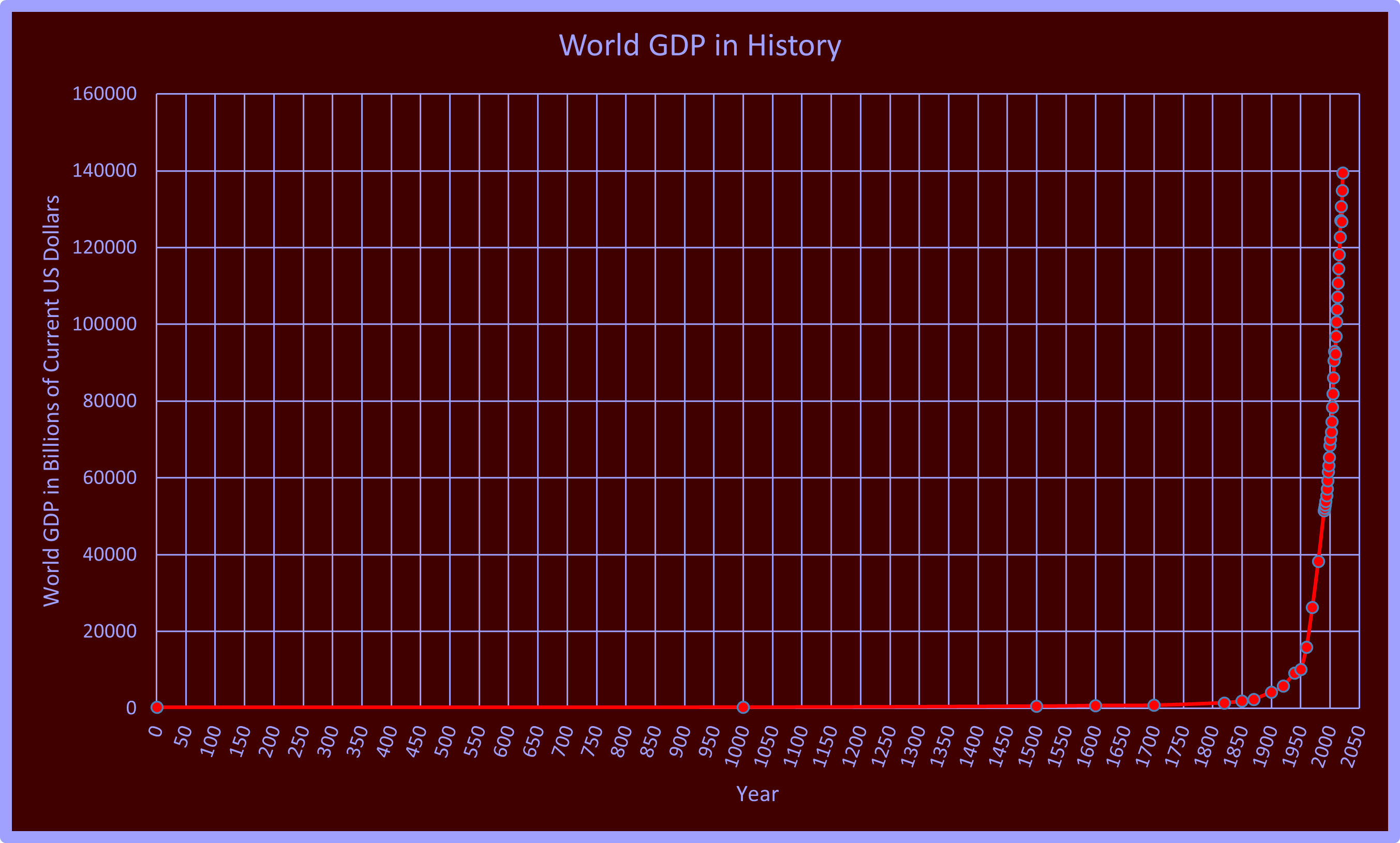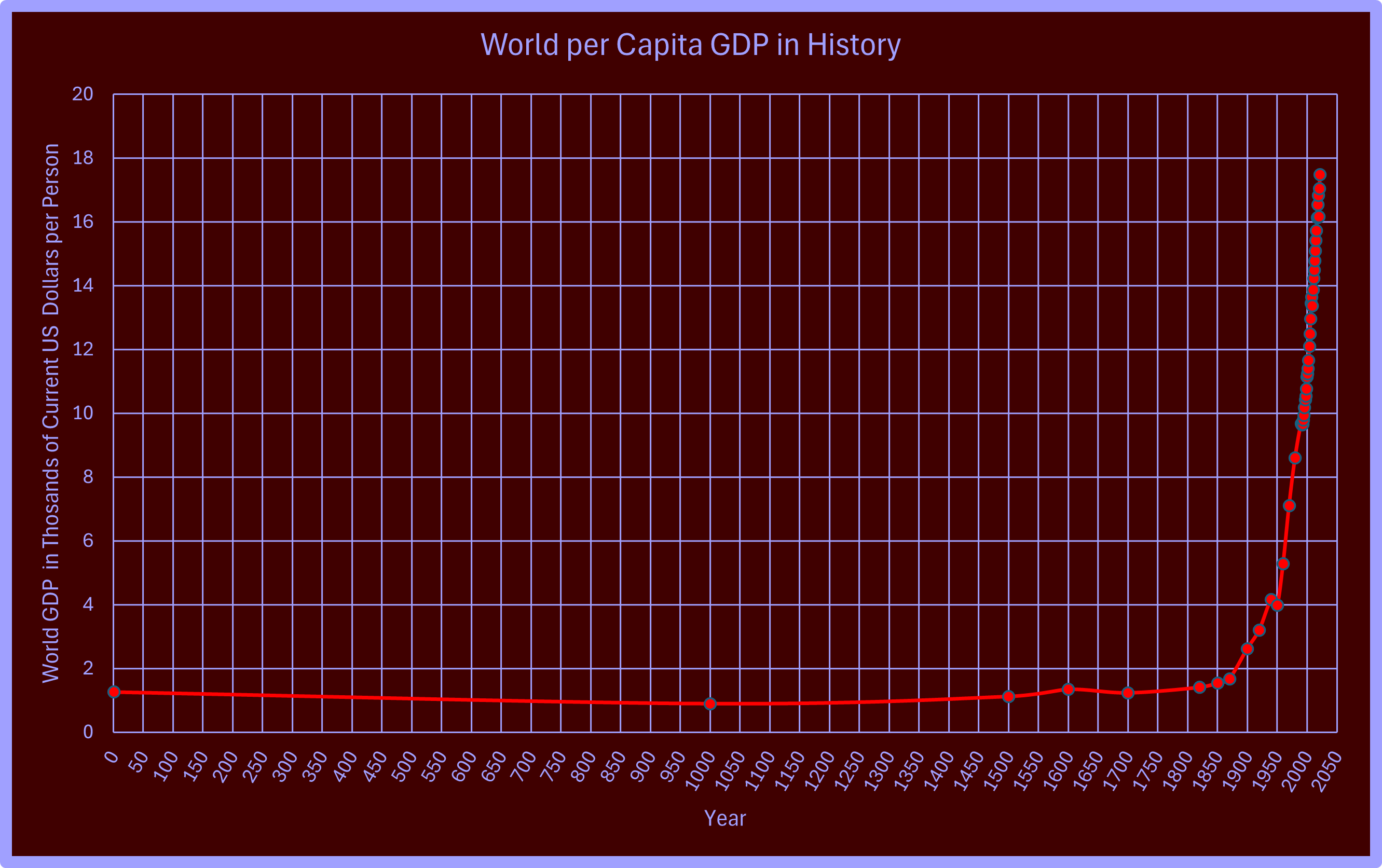

Free-market capitalism, the catalyst of economic progress, has single-handedly rescued the world from centuries of stagnation. This economic powerhouse, which I've previously explored in articles like 'More Pie Please', 'Achievement Economy', 'Does Amazon Deliver', and 'Then & Now Part 3', is the driving force behind the modern world. In this article, I will delve deeper into the specific evidence that capitalism has been the savior of the world, at least in the economic sense. This achievement is evident when we examine two related data sets. First, the graph below vividly illustrates the world's gross domestic product, GDP, for the last two millennia. This data, the GDP, measures the total value of goods and services produced by the world economy in a single year, measured in inflation-adjusted dollars. In the year 1 AD, the world's GDP was about 213 billion dollars. This year, the top 5 US companies each produced more than the entire world 2000 years ago. A thousand years later, world GDP had risen about 15% to 245 billion dollars: a thousand years and no significant progress. This historical data is a testament to the transformative power of capitalism.

By 1500, the GDP had increased to 500 billion, but it was still less productive than Amazon is today. However, it was the entrepreneurial spirit that introduced free markets and capitalism to the world economy around 1600 and rapidly improved production. For the first time in history, capitalists began to invest in increasing production. By about 1800, a new nation had been born dedicated to those free markets and capitalist investors, and in the century from 1700 to 1800, world production doubled, much due to a booming US economy. Since then, the US has led world economic growth so that today, the world GDP is over 650 times greater than in 1 AD and 185 times as productive since the American economic boom. The following graph shows an even more informative form of progress: GDP per person. This graph shows that much of what looked like progress in our first graph was an illusion created by population growth. From 1 AD to 1000 AD, GDP per capita actually decreased. By 1500, the world was still worse off than in the year 1. Fifteen hundred years of economic stagnation until it was finally, slowly, brought to life in 1600 with the birth of free market capitalism.

From 1700 onwards, there was no turning back. The world's prosperity, propelled by the dynamic growth economy in the United States, continued to accelerate. Today, the average human is 20 times better off than a thousand years ago and 14 times better off than 400 years ago. The numbers are even higher in the US and much of the more developed world. This enrichment is the power of free-market capitalism. This system is not just for the elite but also for making the world better for everyone, driving global economic growth, and improving lives. Free-market capitalism, a system that has not just lifted but catapulted billions of people out of poverty, is a global force for good. In 1820, a staggering 76% of the world's population lived in extreme poverty. Today, thanks to the transformative power of capitalism, less than 9% do. Those who oppose capitalism may not realize it, but they are advocating a return to a fixed, no-growth economy in which everyone suffers. Capitalism, on the other hand, benefits everyone, making the world a better place for all.
If you found this article stimulating, please share it with other folks who might enjoy it. And please share your thoughts below. Dr. Cardell would love to hear from you.

Responses